Virtual shifting is arguably the biggest innovation Zwift has brought to the indoor cycling scene in recent years.
What’s so great about it, and how does it work? Let’s dive in…
Virtual Shifting Basics
Unless you ride a single-speed bike, you’re using physical gears to make your riding more enjoyable. You’ll typically shift to an easier (lower) gear when riding uphill so you aren’t grinding away, and you may shift to a higher gear on a descent so you don’t spin out.
With virtual shifting, your chain doesn’t move between different front chainrings or rear cassette cogs when you shift. Instead, when you make a virtual shift, your physical gearing doesn’t change, but the resistance of your smart trainer changes so it feels like you’ve changed gears.

Virtual Shifting Benefits
Why do Zwifters like virtual shifting? Because it beats mechanical shifting in many ways:
- Fast, smooth, quiet: with no chains skipping between cogs, your shifts are completely silent, perfectly smooth, and lightning-fast.
- Reduced drivetrain wear: your chain won’t wear out as quickly, and neither should your chainrings or cassette, since you’re reducing the damaging stresses of shifting.
- Shift under full load: no need to ease off the pedals when shifting under big power, as your chain isn’t going to “skip” with virtual shifting like it can with mechanical shifting.
- Shift under zero load: have you ever stopped riding, especially on a climb, then found it really hard to get going again? With virtual shifting you can shift to an easier gear without pedaling.
- Compatible across many bikes: no more spinning out on your low-geared mountain bike, or needing to swap cassettes if you swap bikes. Virtual shifting works with almost any 8-12 speed bike and auto-calibrates to your physical gearing (more on this below).
- Expanded gear range: Zwift’s virtual shifting currently supports a virtual 24-speed setup, which is more gears than most riders have on their outdoor setups. Additionally, the gear ratio range is very wide (from .75 to 5.49), meaning virtual shifting offers more high and low gears than your mechanical setup.
- In-game visualization: with Zwift’s virtual shifting, you can always see what gear you’re in on screen.
- No more fine-tuning: many riders have to fine-tune their physical shifting when moving between outdoor riding and a direct-drive trainer, since the cassettes aren’t lined up exactly the same. If you’re using the Zwift Cog (see below) you don’t need to do any such fine-tuning… just shift to a physical gear that has your chain lined up straight on the Cog and you’re ready to ride.
In-Game Usage and Settings
Watch a quick video showing how Zwift’s virtual shifting works in game using the Play or Click controllers:
Virtual Shifting Hardware: Smart Trainers
Currently, the following smart trainer models support virtual shifting:
More smart trainer manufacturers are seeing the appeal of Zwift’s virtual shifting and working with Zwift to implement virtual shifting capabilities in their trainers. We’ll update this list as firmware updates roll out to support virtual shifting on additional trainers.
Virtual Shifting Hardware: Play vs Click
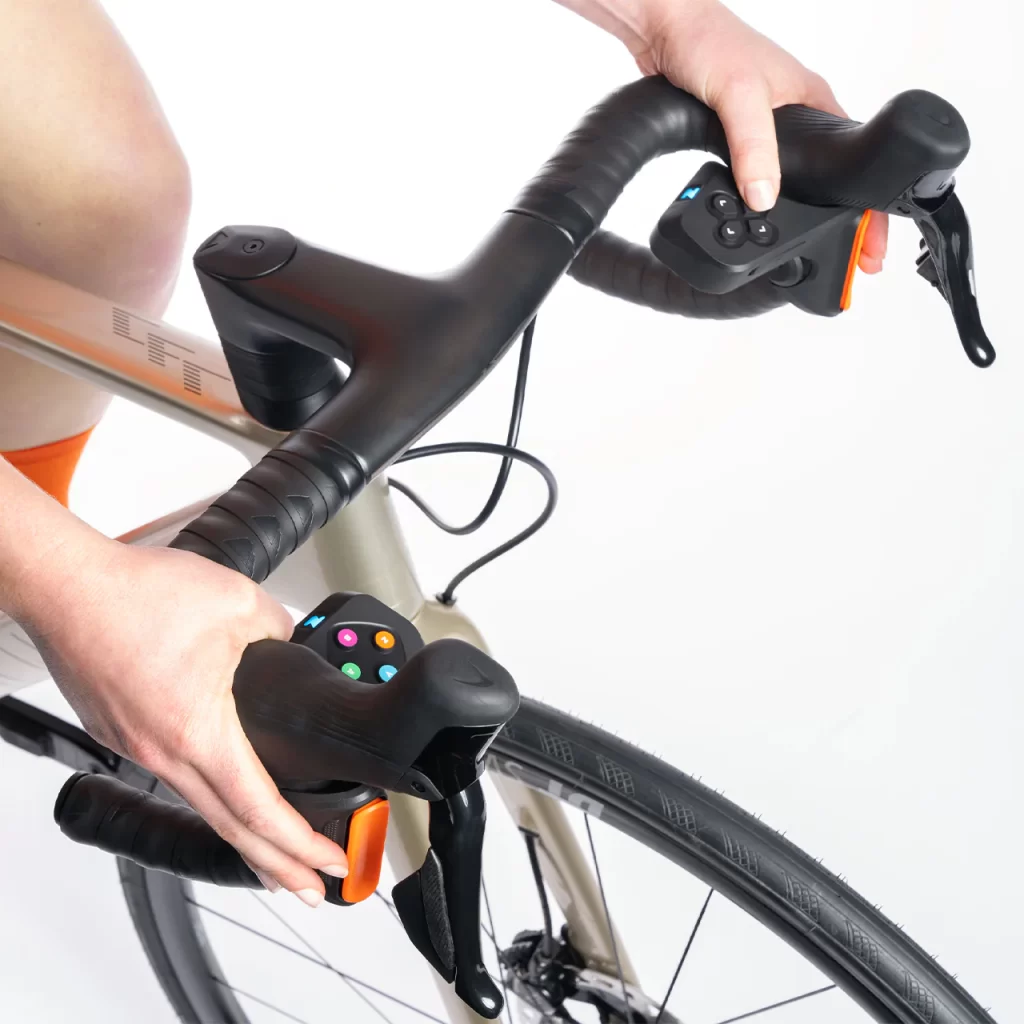
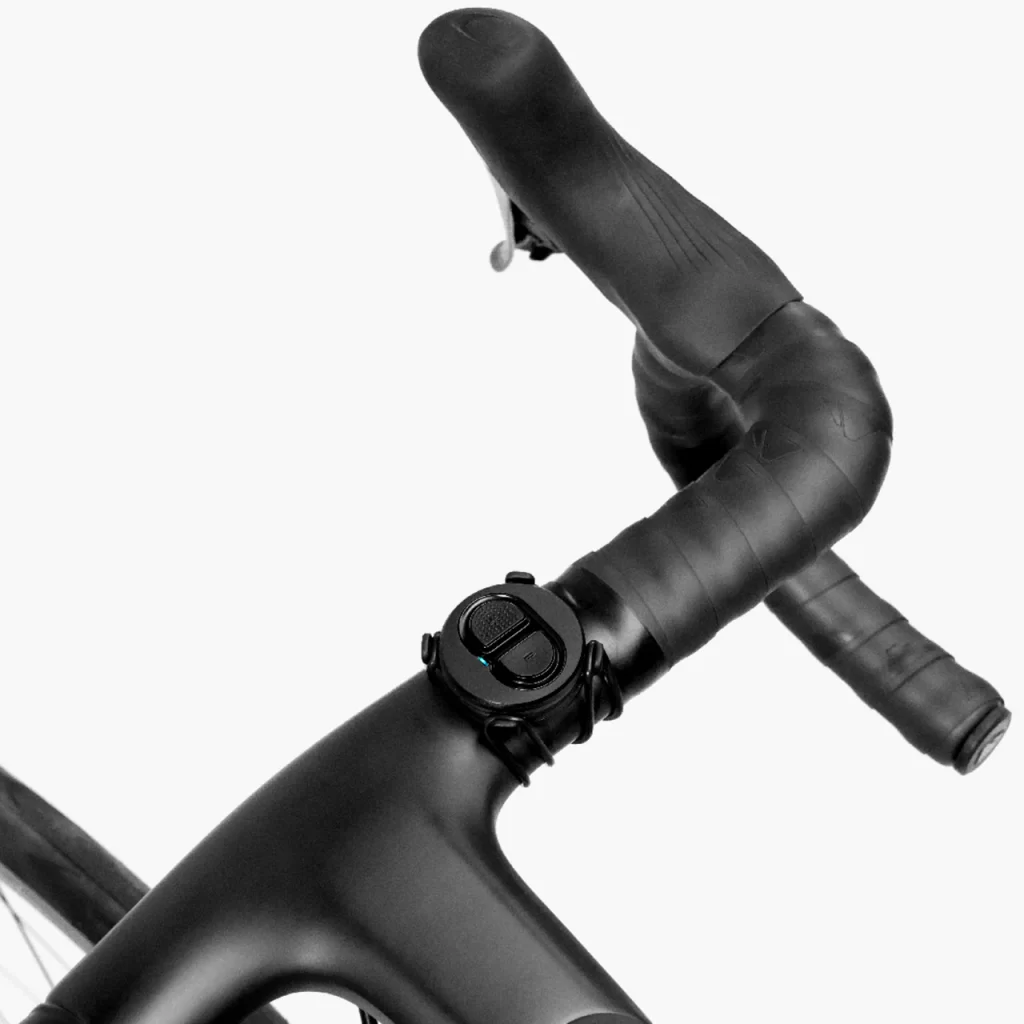
Interested in getting virtual shifting, but aren’t sure if you should buy the affordable Click, the more expensive Play controllers, or even get a whole Zwift Ride Smart Bike? Here’s a rundown of features and specs for the three different controllers:
| Ride | Play | Click | |
| Virtual Shifting | ✅ | ✅ | ✅ |
| Steering + Braking | ✅ | ✅ | ❌ |
| Powerup Trigger | ✅ | ✅ | ❌ |
| Ride On Bomb button | ✅ | ✅ | ❌ |
| Game Navigation buttons | ✅ | ✅ | ❌ |
| Drop bar compatible | ✅ | ✅ | ✅ |
| Flat bar compatible | ❌ | ❌ | ✅ |
| TT bar compatible | ❌ | ❌ | ✅ |
| Customizable Shifting | ✅ | ❌ | ❌ |
| Power Source | USB Rechargeable | USB Rechargeable | Coin cell (CR2032) |
| Battery Life | ~20 hours | ~20 hours | >100 hours |
| BLE Connections* | 1 | 2 | 1 |
| Price | $1299 (frame + trainer) or $799 (frame only) | $99US | $39US |
*If you’re an Apple TV user, it’s worth noting that the Click and Ride controllers use just one Bluetooth connection, while Play requires two. Apple TV limits users to two Bluetooth connections, which means Play users on Apple TV must pair all devices through the Companion app (since you must also connect your smart trainer, which would make three connections if you add Play into the mix). The only way around this is via a smart trainer that can connect using WiFi (read more).
But if you use Click or Ride, you may be able to still pair directly through Apple TV, as long as you aren’t pairing a heart rate monitor as a separate device.
Also worth noting: only one Click can be paired to your Zwift session, so if you’re thinking of buying two so you can manage shifting with either hand… that’s not possible at this time.
Virtual Shifting Hardware: Zwift Cog
Released in October 2023, the Zwift Cog is a single-cog replacement for a standard rear cassette. It was initially sold with the Zwift Hub One smart trainer, and is now exclusively sold with the Wahoo KICKR CORE Zwift One.
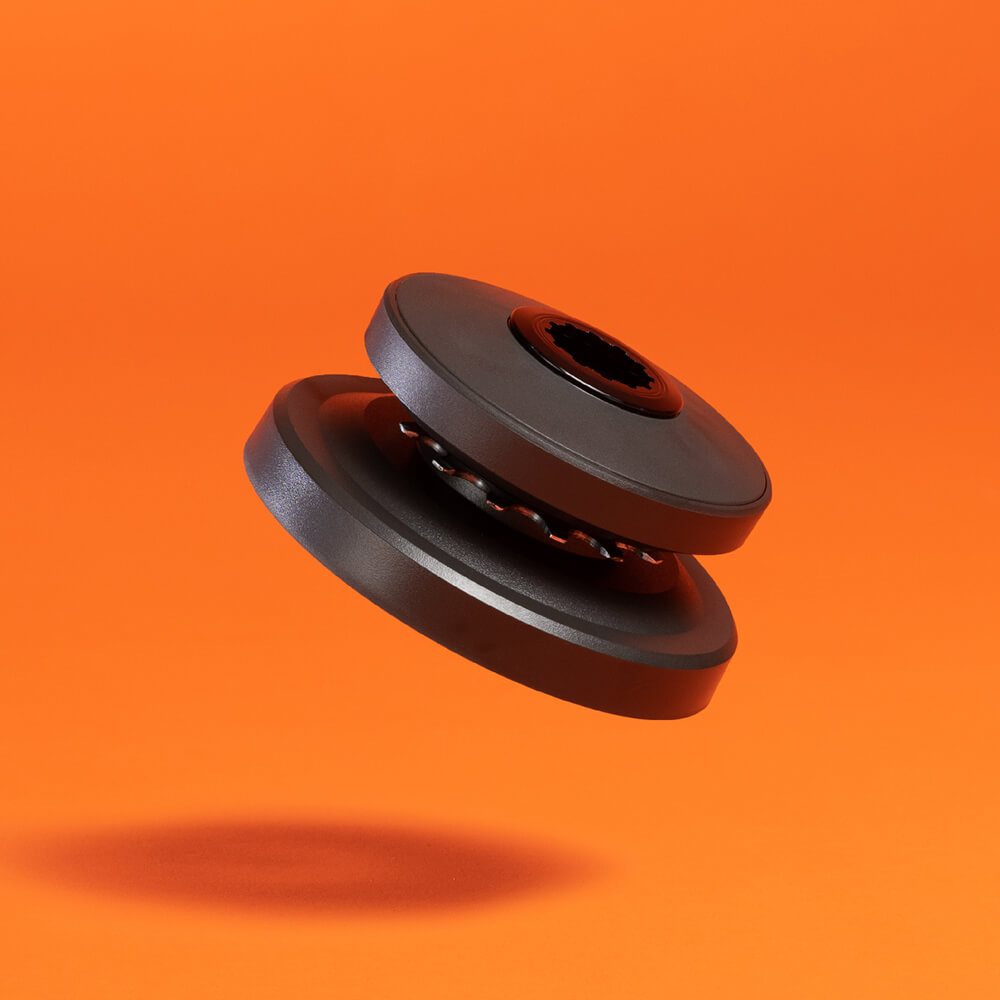
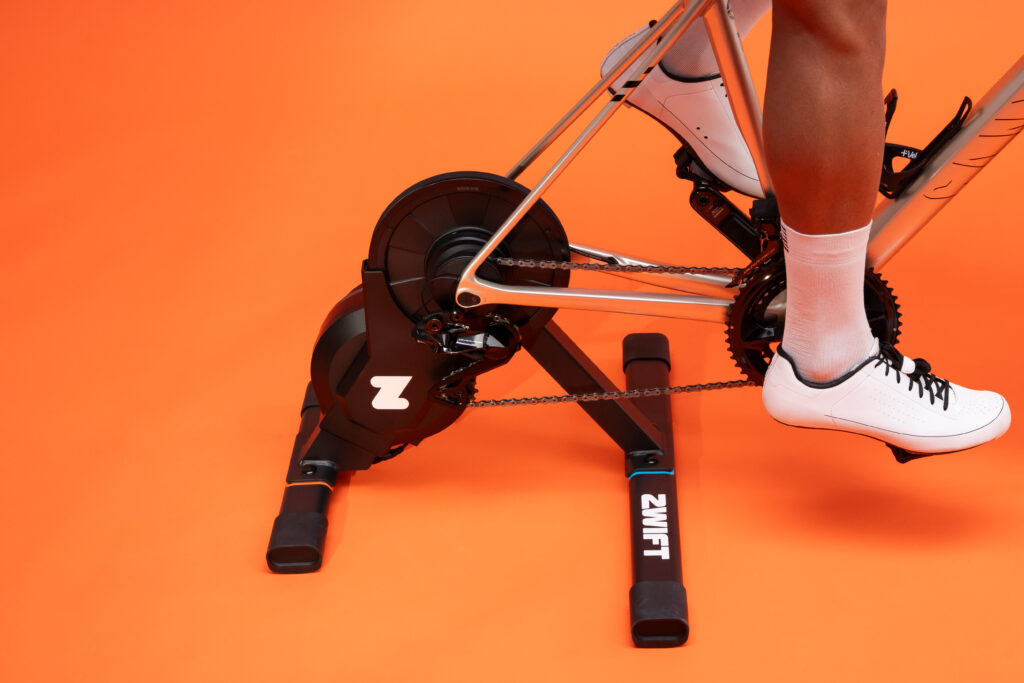
While you’ll need virtual shifting to use the Cog, you definitely do not need to have the Cog in order to use virtual shifting! Virtual shifting works just fine on a standard bike setup with multiple front chainrings and a standard rear cassette.
The Cog was created by Zwift to make getting on Zwift even easier, because it removes the need to adapt your trainer’s cassette or fine-tune your bike’s shifting when putting your bike on the trainer. Just shift to a gear where your chain is lined up nicely on the Cog, and you’re ready to go!
If you have a trainer that supports virtual shifting, you can buy the Zwift Cog + Click Upgrade Kit ($79.99 US) and get the easy compatibility of the Cog with the simple shifting of the Click.
Gearing Details
Zwift’s virtual shifting is not user-configurable at this time. That is, you can’t set up custom virtual chainring(s) and cassette. But here’s the thing: you really don’t need to.
Zwift gives you 24 virtual gears ranging from a gear ratio of 0.75 to 5.49:
| Gear | Ratio |
| 1 | 0.75 |
| 2 | 0.87 |
| 3 | 0.99 |
| 4 | 1.11 |
| 5 | 1.23 |
| 6 | 1.38 |
| 7 | 1.53 |
| 8 | 1.68 |
| 9 | 1.86 |
| 10 | 2.04 |
| 11 | 2.22 |
| 12 | 2.40 |
| Gear | Ratio |
| 13 | 2.61 |
| 14 | 2.82 |
| 15 | 3.03 |
| 16 | 3.24 |
| 17 | 3.49 |
| 18 | 3.74 |
| 19 | 3.99 |
| 20 | 4.24 |
| 21 | 4.54 |
| 22 | 4.84 |
| 23 | 5.14 |
| 24 | 5.49 |
By comparison, typical mid-compact road bike gearing with an 11-28 cassette offers a much narrower range of gear ratios (1.29 to 4.73), and some of those gears will overlap.
Using bike gear calculators, we can see that you’d have to run 30t and 60t chainrings paired with an 11-40 cassette to match the gear ratio range of Zwift’s virtual shifting!
Because Zwift’s virtual gears don’t overlap, they’re able to space the gear ratios so the resistance change between each gear isn’t too large or too small. For us, it feels just right.
Customizing Your Shifting (Zwift Ride Smart Frame Controllers Only)
Zwift Ride smart frame owners have a few additional settings that modify their virtual shifting experience:
- Shift Style: choose how your shifting buttons behave. Options are Sequential, Shimano Style A, Shimano Style B, SRAM Style.
- Gear Range: change the gearing range of your virtual shifting. Options are Mixed Terrain (1×24), Flat (53/39, 10-28), All-Arounder (43-35, 10-33), and Climbing (43/30, 10-36).
- Drop Buttons: swap the function of the drop buttons between Ride On and Power Up
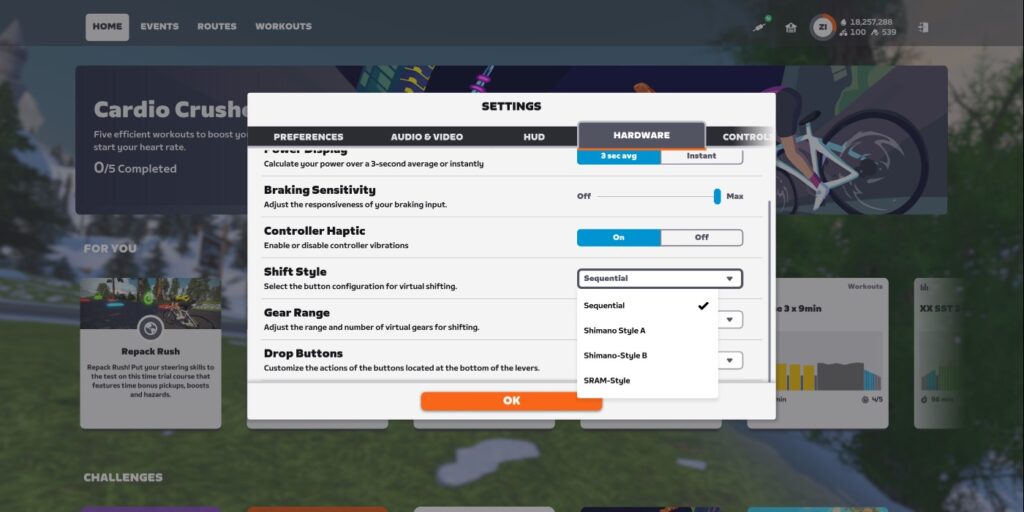
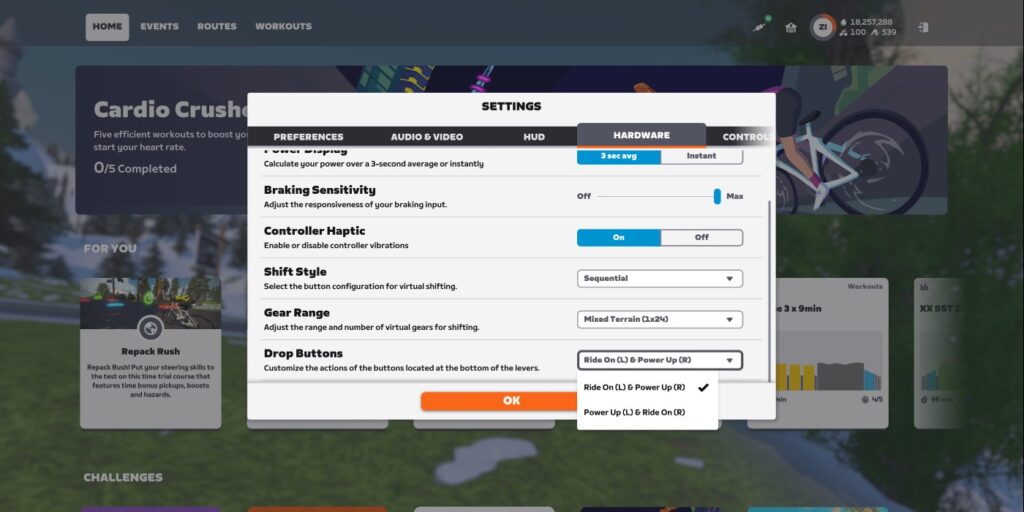
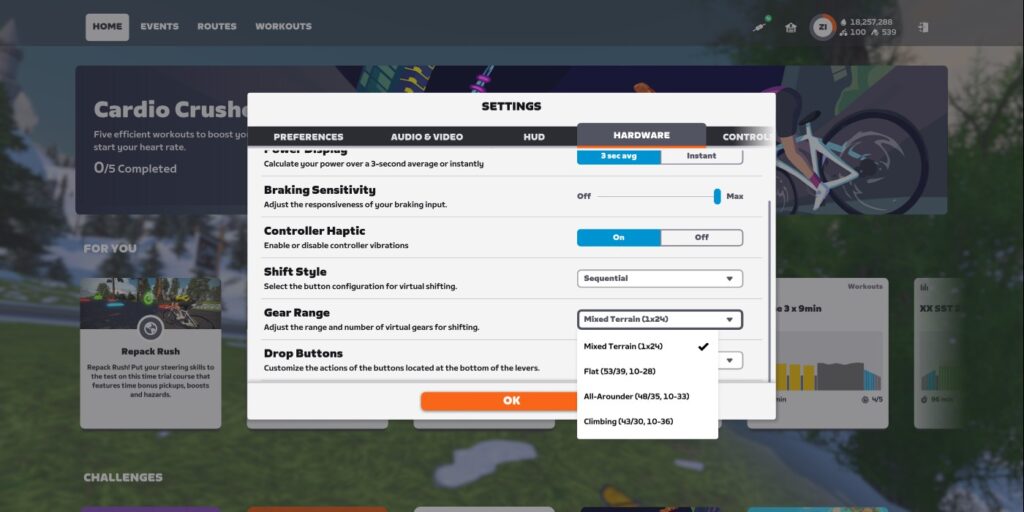
Virtual Gearing Meets Physical Bikes
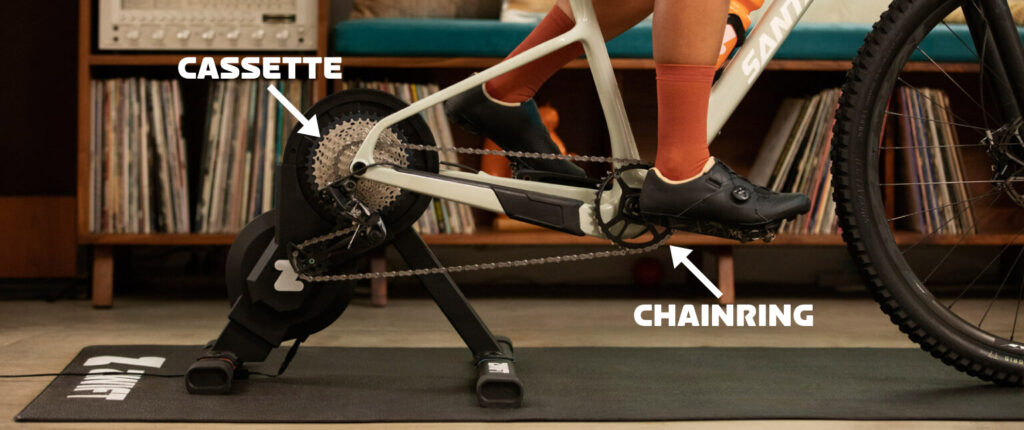
One of the beautiful things about virtual shifting is that it works with whatever physical gearing your bike has. Are you on a road bike with a wide range of gears? A MTB with a lower gear range? A city bike with a limited gear range? No matter. If you have virtual shifting enabled, Zwift automatically detects your physical gearing in the first few seconds of pedaling after you enter the game. It then sets up your virtual gearing to match the table above, using whatever physical gear you are currently in.
Because of this, you’ll want to be in the right physical gear before you start riding in game. Which gear should you be in? Zwift recommends the small ring in front, and a lower gear on your cassette (perhaps 3rd or 4th) which gives you a decently straight chain line.
(Of course, if you have the single-cog Zwift Cog, you don’t need to worry about which gear you’re in on the back.)
Personally, we prefer the inertial feel of the big ring in front, and 4th gear or thereabouts on the cassette. This feels more like riding on flat ground – where you don’t have to push across the top and bottom of the pedal stroke – vs climbing in the small ring.
Try different physical gears and see which feels best to you. If you want to force Zwift to re-detect your physical gearing and thus recompute the feel of virtual shifting, you’ll need to do one of the following:
- Disconnect and reconnect your trainer
- Power cycle your trainer
- Restart the Zwift game
Virtual Shifting with Smartbikes

Smartbikes like the Wahoo KICKR Bike, Tacx NEO Bike, Stages SB20, and Wattbike have been using their own version of virtual shifting for years. That is, these bikes don’t have physical chainrings and cassettes like outdoor bikes. Instead, shifting just changes resistance on the bike, much like Zwift’s virtual shifting does.
But the virtual shifting of smartbikes is not the same as Zwift’s virtual shifting. For one thing, some bikes don’t show their current virtual gear in Zwift (although we really wish they did). For another, most smartbikes let you configure your virtual gearing (chainrings and cassette) to whatever you’d like, using the manufacturer’s app.
Questions or Comments?
What do you think of Zwift’s virtual shifting? Share below!

